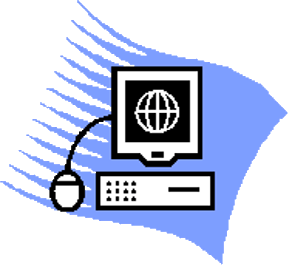













|
EDUC 475/698A
Mindtools for Investigation and Education
Class Created Board
Game
Digital Basics
Ron Charnis, Bryan Shuy, Scott Sines, Veronika
Subertova, Neda Mihneva, Ramona But |
 |
|
Instructional Objective
Players will learn about and be able to identify and explain
basic computer operations and parts. Players will learn about
the Internet, mouse, keyboard, and basic computer software.
Includes information about the history of computers and basic
computer software. eThemes included are
- Parts/Hardware- Mouse, Keyboard, Speakers, etc
- Types of computer- PC, MAC
- Drives- A,B,C,D
- Operating Systems- Msft, linux, unix
- Companies- intel, msft, gateway, dell, ibm, etc
- Internet- (Subcategories-email, viruses/popup, etc)
- Peripherals- webcam, printer, scanner, etc
- Computer navigation- start → file → save etc
- ICON Identification- like the W for Word, walking man
for Aim, etc
- Keyboarding Skills
- Internet Safety
- Ethics-downloading, plagiarism, application use, etc
|
Learners & Context
of Use
- 2-4 players
- For Players with little to no experience with computer
(age range can vary from 8 and up)
The game can be played in or out of school supporting the
Digital Fluency Knowledge for all and NCLB’s mandate
of students being technology literate by 8th grade. |
Object of the Game
Objective: To successfully build a computer
(Monitor, Tower, Mouse, Keyboard, and Speakers). |
Game Materials
List each of the physical objects one would find in the box.
For example, the board, each type of card, each type of prize
or token, etc.)
- Game board
- 4 different playing pieces, each a different color [Word
... PDF]
- A six sided die
- Playing Cards [Word
... PDF]
- Red Hardware Cards
- Blue Software Cards
- Green Operating Systems Cards
- Yellow Internet Systems Cards
- Grey Peripherals Cards
- Difficult Cards
- Computer Part Tokens (Four Sets) [Word
... PDF]
- 1 stack of no color “Virus” cards [Word
... PDF]
|
Time Required
The game is for 2 to 4 players and will play for approximately
thirty minutes to an hour. |
The Rules
Game Play:
- Open the Game Board.
- Each Player will choose a colored playing piece.
- Players start in the center of the board.
- Players roll the dice to determine order (highest number
goes first)
- Players roll a dice and proceed that many spaces in any
direction.
- On whichever color the player lands, he or she must answer
the corresponding question from the corresponding color
card.
- If the player gets the question right they roll again
and if the player lands on a ‘computer piece space’
he or she collects that piece towards building their
computer.
- Once the player has completed their final (5th) piece
of the computer, player must proceed back to the starting
place.
- Barrier- Every once in a while, a ‘virus card’
will occur in a color question group. This card will remove
a component of the computer being built.
- In order to get to the start point, player must proceed
one space at a time along an axis answering questions from
the ‘difficult pile’.
- The first to return to the start space with a successfully
completed computer wins.
|
Design Process
- Class given a task [Word
... PDF]
- Brainstormed [Word
... PDF]
what the objective was and what would help determine if
the outcomes/objectives were met (what should players know
and be able to do, and what questions and categories should
we make)
- Continued to brainstorm through the Discussion Threads
[Word ...
PDF]
- Discussed more in the online chat [Word
... PDF]
- Used the white board to brainstorm
the product that would be “built” and ideas
about the design of game board
- Posted summary of rules and regulations and example of
Board Piece
|
References
Books & Journals
Electronic
|
|
|


















